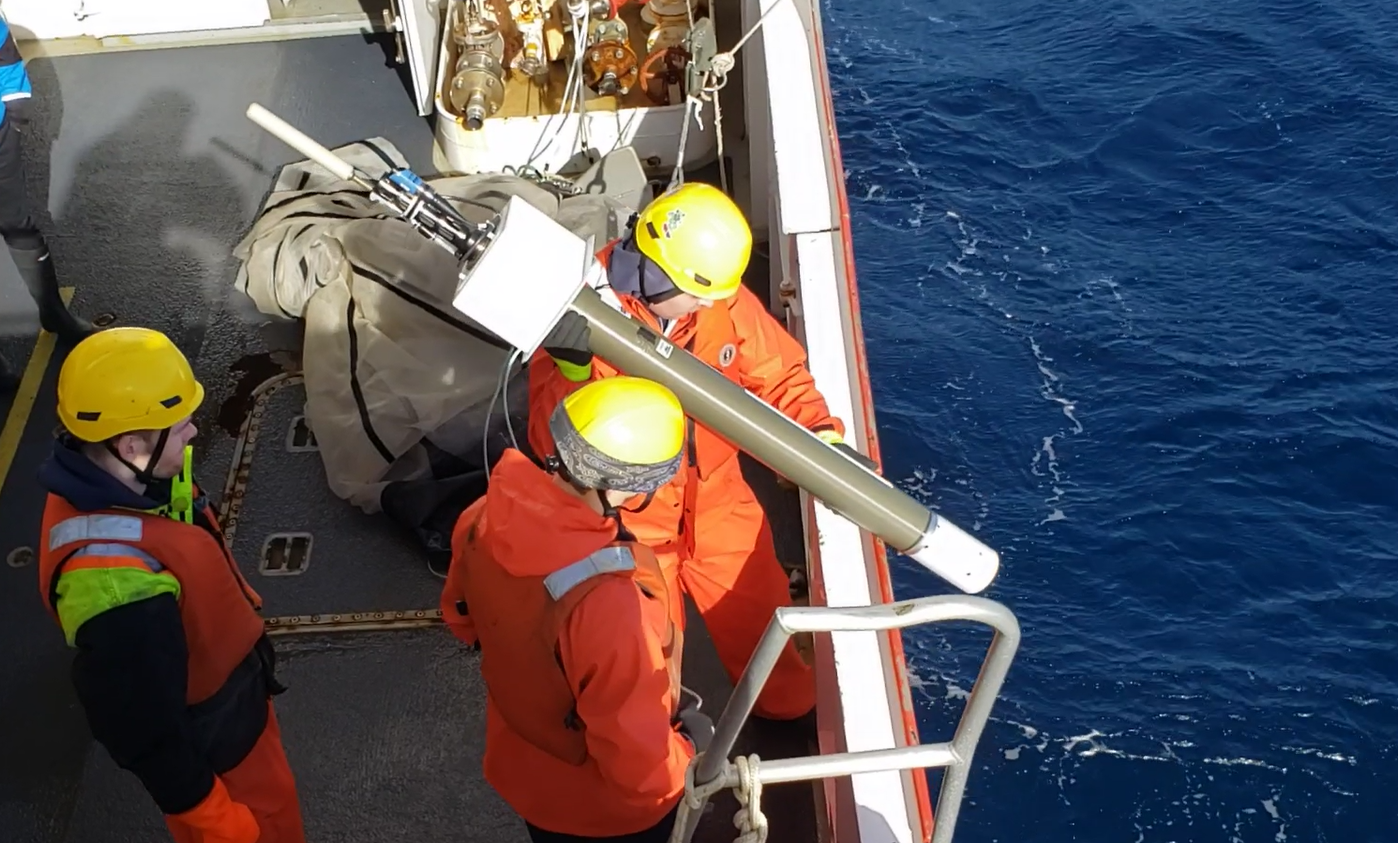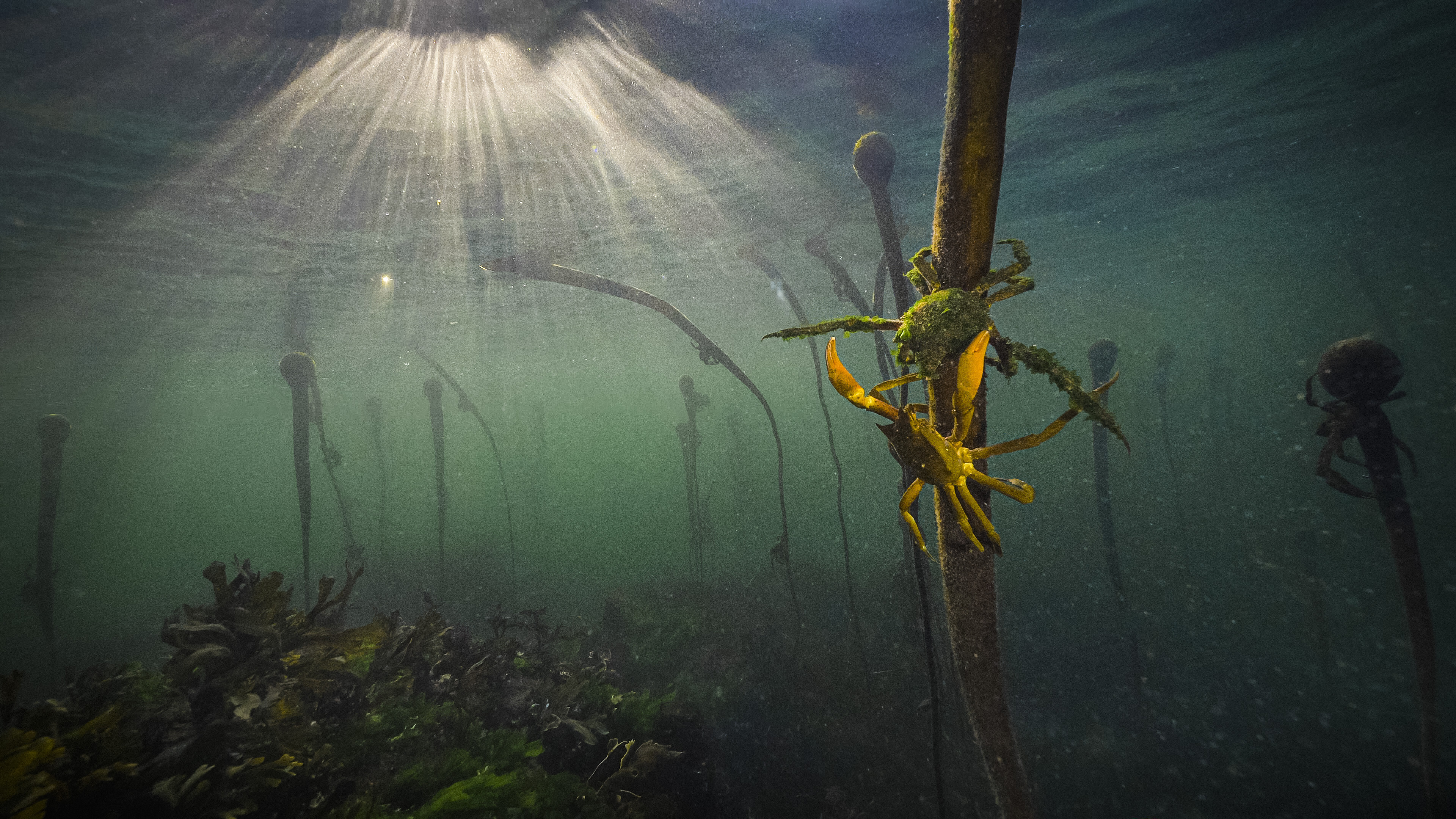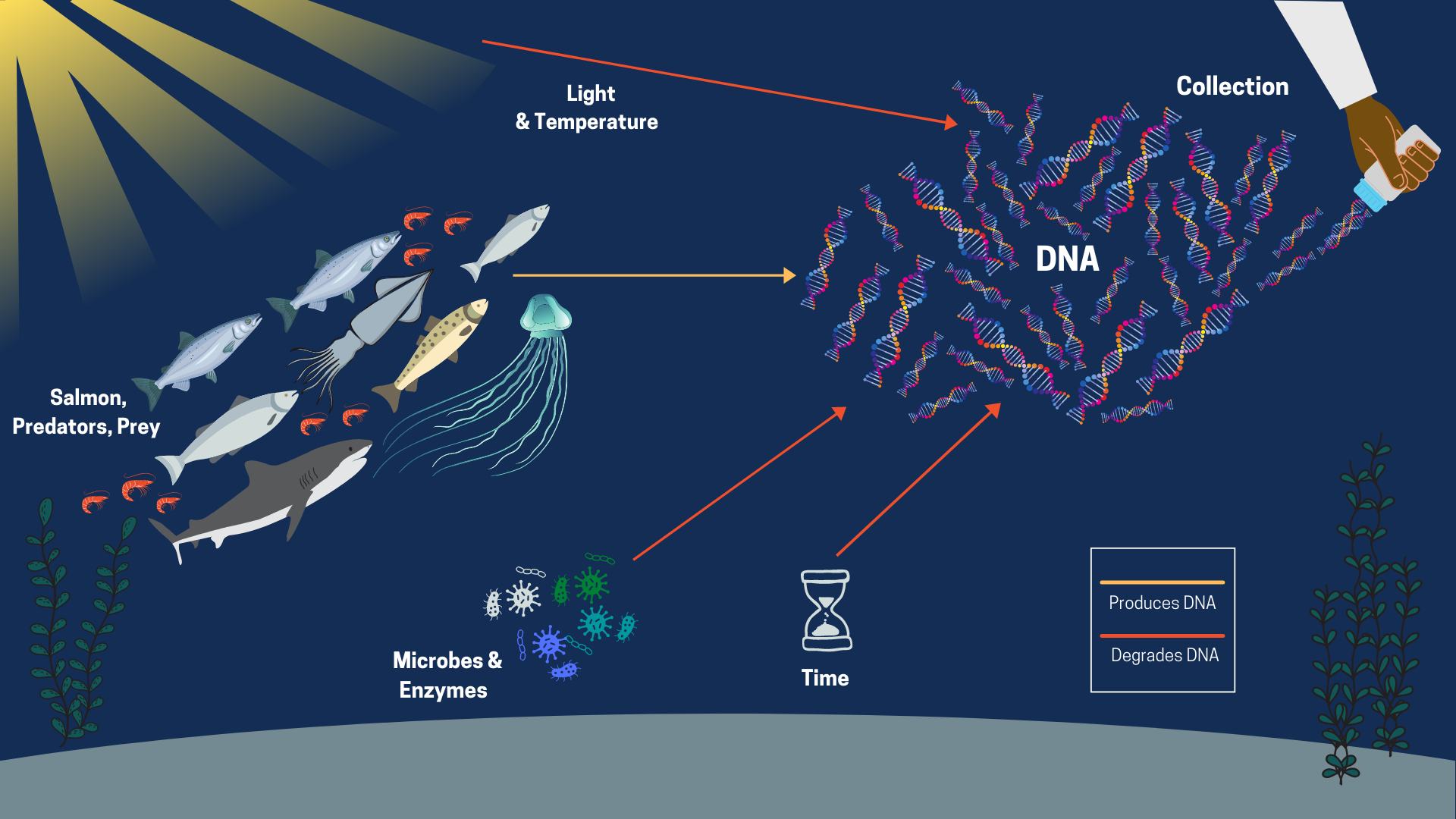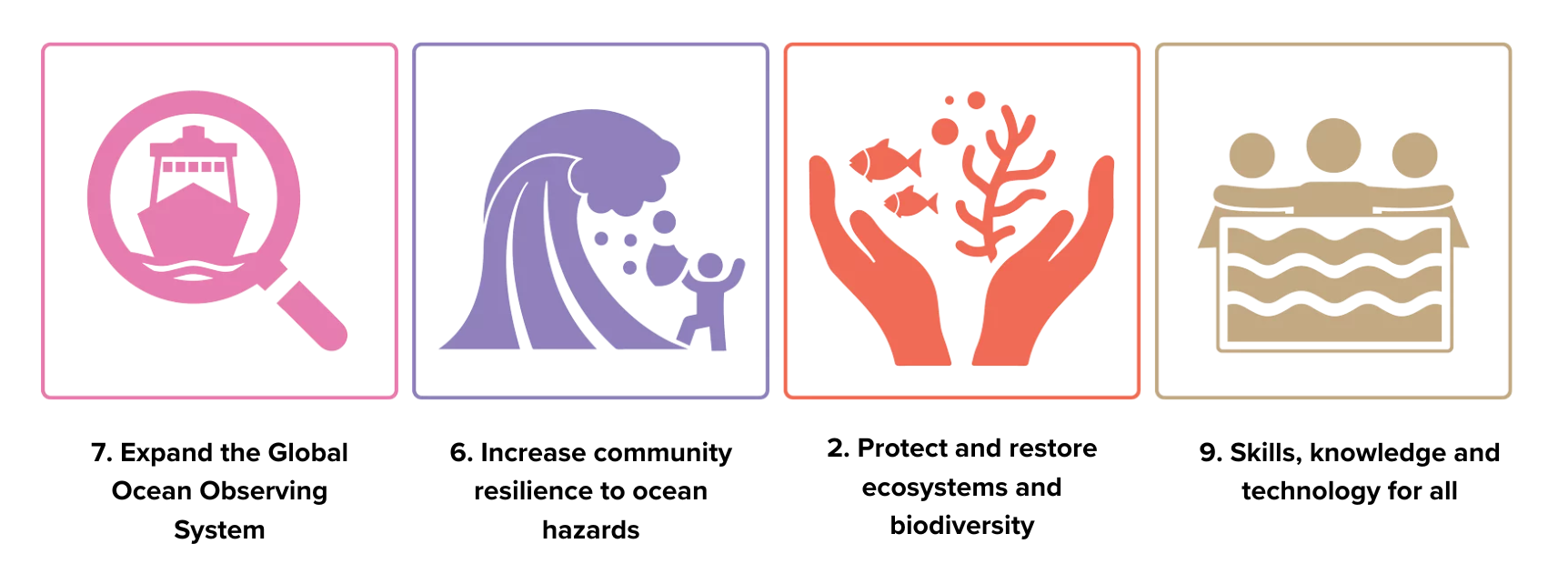February 13th, 2024 | By Camille Jasinski
Highlighting Biomolecular Ocean Observing in the Northeast Pacific Ocean - OBON (The Ocean Biomolecular Observing Network)
As the ocean continues to change due to climate and anthropogenic impacts, there is an increased need to observe, monitor, and analyze these changes at different scales. Mapping the diversity of life in the ocean, understanding what factors impact these patterns, and identifying how ocean diversity is changing is critical to understanding ocean ecosystem health.
It is becoming more crucial to expand our ocean observing tools to improve our understanding of ocean processes and delivery of ecosystem services. A wide range of ocean observation, monitoring and modeling tools and systems exist today - programs such as the Global Ocean Observing System (GOOS) support and help integrate local, regional, and national ocean observing systems. Similarly, the Argo network uses autonomous free drifting profiling floats to observe temperature, salinity, and currents.

As ocean observation in technologies advances, tools to monitor biodiversity efficiently and at global scales have lagged behind tools for measuring the physical and chemical properties of the ocean environment. Biomolecular tools are changing the way we can monitor ocean biodiversity, and are therefore becoming increasingly important tools in the broader ocean observing system helping to close the gap between biological, and physical and chemical ocean observing.
What is Biomolecular Ocean Observing?
Biomolecules are often referred to as the building blocks of life. Nucleic acids such as DNA and RNA, proteins, carbohydrates, and lipids are all biomolecules which play a crucial role in shaping the relationship between living organisms and their environment. The ocean is infused with biomolecules which can tell us more about the rich and diverse microbial and planktonic life supporting our marine ecosystems. Decoding these molecules can help us better understand global marine biodiversity, from viruses to fish to marine mammals.
Biomolecular ocean observing is a growing field of research that uses non-invasive methods to collect information about ocean life. As organisms move through the ocean (or the ocean moves them) they leave behind biomolecular traces which can be in the form of the tissues, skin cells, mucus, or feces of animals, in the case of the smallest life forms in the ocean (viruses, bacteria, protists) the organisms themselves, or even the chemical signals being released by organisms. Scientists can collect these traces from the surrounding environment, whether it be water, sediments, or even air, and analyze the biomolecular material to give greater “insight into the structure and function of marine ecosystems over time and space” (Samuel et al., 2021). This can help scientists better understand, manage, and predict how stresses on ocean ecosystems - such as pollution, rising temperatures, and anthropogenic impacts - are increasingly affecting marine life (distribution changes, habitat loss, etc.).

What is the Ocean Biomolecular Observing Network?
The Ocean Biomolecular Observing Network (OBON) is an endorsed programme under the United Nations Decade of Ocean Science and Sustainable Development (the Ocean Decade) that will monitor, research, and understand ocean life by analyzing biomolecules on a global, collaborative scale. The high level objective of OBON is utilizing biomolecular technologies to monitor, research, and understand life in the ocean at every trophic level and scale, how life varies in response to climate and anthropogenic impacts, and how these changes impact society. OBON is an Ocean Decade global programme led by the Partnership for Observation of the Global Ocean (POGO) and the National Oceanographic and Atmospheric Administration (NOAA) which will host related ocean biomolecular observing projects across all basins.
OBON’s high level objective is broken down into four more detailed objectives:
Building a coastal-to-open ocean multi-omics biodiversity observing system over the Ocean Decade (2021 - 2030)
Developing and transferring capacity so as to initiate marine biomolecular observation activities through training programs combined with funded equipment programs supported by development/aid agencies and philanthropy
Enhancing marine ecosystem models (including new modeling based on machine learning) by adding biomolecular components so the models can utilize data collected from coordinated molecular observations and generate 4D multi-omic biodiversity seascapes
Addressing pressing scientific, management, and policy questions linked to the state and dynamics of life in the ocean, including exploited resources and those affected by other pressures
Mapping Marine Biodiversity with eDNA
Biomolecular ocean observing is a less invasive, cheaper, and larger-scale alternative to traditional visual observations which is helping scientists better understand, predict, and manage changes to ocean biodiversity and ecosystem function. Increasingly, DNA present in the environment or environmental DNA (eDNA) is being used as a tool to monitor global biodiversity, from snow to soil to sea. By collecting genetic material drifting in the marine environment - whether encapsulated in living microbial cells or in shed cells or fecal material from larger organisms - scientists are able get “a snapshot of organisms in an environment”, detecting “different classes and sizes of organisms from the same sample of water” (Chavez et al., 2021) by targeting and sequencing a suite of marker genes specific for different groups of marine life. This method also eliminates the need to handle animals and can capture information about cryptic or invasive species to give us a better picture of species distributions in the global ocean and how they might be changing.

Amplifying Biomolecular Observing in the Northeast Pacific Ocean
Our ocean basins are facing many challenges, many of which are similar due to global climate and human impacts, but also many that are unique to specific regions. In the Northeast Pacific, a rapidly changing climate and increasingly warmer ocean temperatures have been causing increased ocean acidification, harmful algal blooms, changes in abundance and distribution of culturally, economically, and ecologically important species, collapses in fisheries (crab, salmon), and coastal erosion, amongst other issues. Endorsed biomolecular ocean observing projects under the OBON program from the Northeast Pacific region are using biomolecular tools to understand how these challenges in our region are affecting our ocean ecosystem.
The OBON programme will specifically tackle four of the 10 Ocean Decade Challenges:
